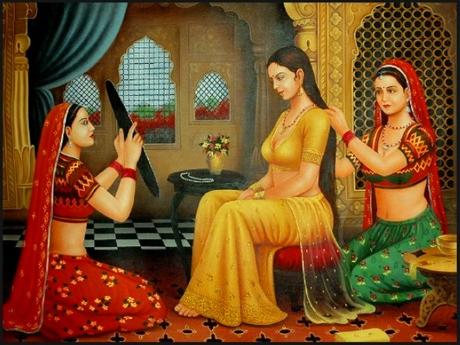A ghazal was written in couplets, minimum number five, maximum number fifteen, and had an AA, BA, CA, DA, EA, FA etc rhyme scheme. The root of the word غَزَل (gazal) in Arabic can suggest variously to flirt, sweet-talk or display amorous intent, a young doe (from which we derive the word gazelle), and to spin yarn. It should come as no great surprise then that ghazals were typically amatory, a poetic expression of love, desire, devotion and its frequent corollary, pain, separation, loss.

The rhyme-scheme and the meter are strict, the tropes are universal (almost to the point of cliche) but the couplets themselves demonstrate thematic variety and it is the combination of ideas that lends the ghazal its intrigue and power: an ambiguity but also simultaneity of meaning.
I thought it was incumbent on me to give it a go. The ghazal's uniqueness derives from its rhyme and refrain rules. Key to the success of the whole poem is the radif or rhyming word, not only because it will appear frequently - twice in the first couplet or sher, and then at the end of every subsequent sher - but also because it will become thematic of the piece and needs to tie the meanings of disparate ideas together. Also of central importance is the qaafiyaa or rhyming pattern. I'm going for the baker's hexameter (beloved of dyscalculic versifiers everywhere). If I can conjure something as subtle but powerful as a candle burning in a window I shall be happy. To the imaginarium...

Here, then, is my first (and very possibly last?) attempt at a ghazal. I found it a constraining form and a tough assignment. I'm sure you'll let me know what you think of it.
ReflectedIn morning's mirror, your fresh beauty is reflected.In midnight's darkened pool your radiance floats reflected.
These surfaces don't lie. To those who watch you closelyyour outward glow reveals a noble soul reflected
regardless of the hour. I long to clasp you to meto see my happy eyes in your dark orbs reflected;
for one chance shy stray glance has won my heart completely, the turmoil in my breast in sleepless nights reflected
when spurning of my bed I snare my thoughts in verses,set down my hopes and fears by candlelight reflected
across poems I'll never share. Unworthy servant, Imust live content to glory in the blaze reflected
from the woman I love. I cannot speak my passion.You'd graciously repulse me once you had reflected
and that rejection would surely hurt me worst of all.Here's morning's mirror. Your fresh beauty shows reflected.
May I just say, in closing, that Google's updated version of Blogger - used for the first time here now they've finally made the old version unavailable - is totally sh!t to work with. It's slow, it crashed half a dozen times while I was writing this blog, it has far inferior features compared to its predecessor and I really wonder why they bothered.
Thanks for reading, S ;-)
Email ThisBlogThis!Share to TwitterShare to Facebook
